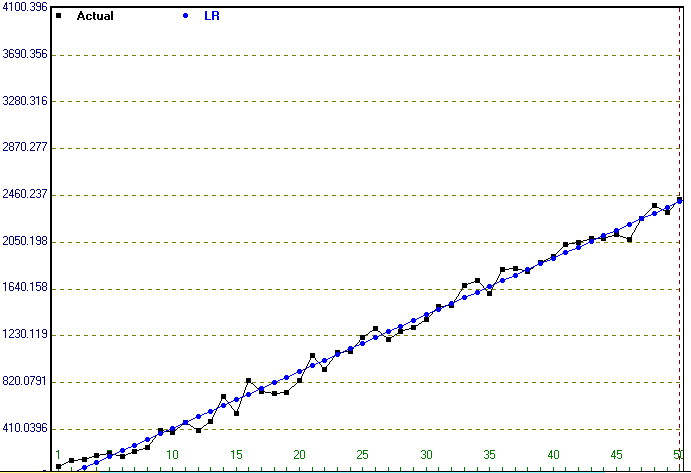OR-Notes are a series of introductory notes on topics that fall under the broad heading of the field of operations research (OR). They were originally used by me in an introductory OR course I give at Imperial College. They are now available for use by any students and teachers interested in OR subject to the following conditions.
A full list of the topics available in OR-Notes can be found here.
Hence best result is an MSD of 93422 associated with a forecast of 2182
However, consider the January figures, do you believe this forecast?
Taking the Holt-Winters additive model with a seasonal cycle of 12 (months) gives an MSD of 82921 and a forecast of 1955 which seems much more reasonable given the previous January figures.
The graph of the data for the J785 sales can be seen below. You will note that there appears to be a linear trend (straight line) to the data and no visible seasonal effect (such as sales always rising in summer and dropping in winter). This illustrates that even simple visual inspection of data can give you useful information.
This would probably mean that a forecasting method involving a linear trend would give us a better forecast than other methods. You will see from the detailed results given below that this is so (e.g. double exponential smoothing with trend is better than double exponential smoothing).
The figures for the various forecasting methods are as follows:
Method MSD Forecast
Simple average 545675 1189
Weighted moving average
3 month average 15376 2367
6 month average 35169 2260
12 month average 111280 2133
Moving average with linear trend
3 month average 14833 2418
6 month average 8754 2492
12 month average 7234 2428
Single exponential smoothing 10876 2407
Single exponential smoothing with trend 6409 2416
Double exponential smoothing 10840 2406
Double exponential smoothing with trend 6792 2449
Linear regression 5014 2456
Holt-Winter's additive model
seasonal cycle of 12 18951 2316
no seasonal cycle specified 6408 2417
Holt-Winter's multiplicative model
seasonal cycle of 12 49971 2442
no seasonal cycle specified 6327 2419
The lowest MSD is for linear regression with MSD=5014 and a forecast for the next month of 2456. The next lowest MSD is for Holt-Winter's multiplicative model with no seasonal cycle specified (MSD=6327) and a forecast of 2419 for the next month. However single exponential smoothing with trend with MSD=6409 and a forecast of 2416 for the next month is also a reasonable choice.
The graph of the linear regression, together with the actual data, is shown below.
